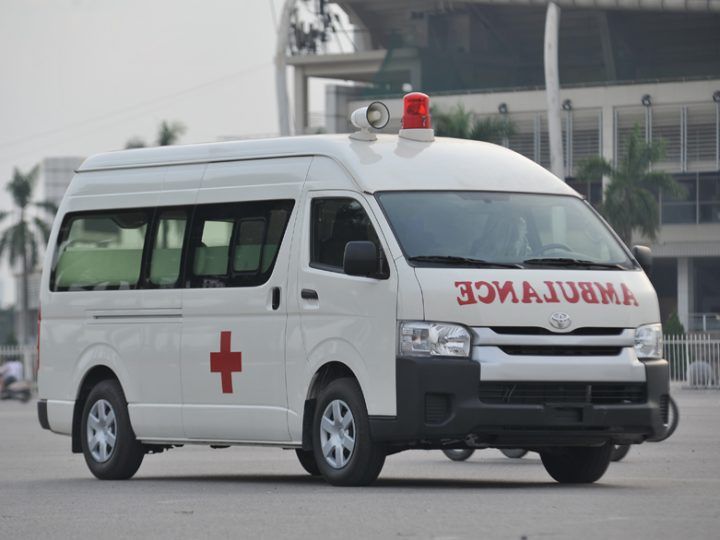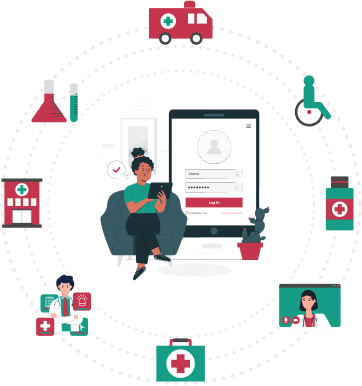Advanced Life Support (ALS) ambulances have an important role in providing medical assistance during life-threatening situations. These specialised ambulances carry advanced equipment and are staffed by highly trained professionals who take care of complex medical situations. In this blog post, we will explore the significant role ALS ambulances play in emergencies and how they contribute to saving lives or improving patient care.
What is ALS Ambulance Service?
Advanced Life Support ambulances are different from other types of ambulances, such as BLS (Basic Life Support) units. These advanced ambulances come equipped with specialised medical equipment and tools that are required only in life-threatening situations. It may include devices such as cardiac monitors, defibrillators, and medications. These tools help the paramedics and emergency medical technicians (EMTs) onboard to provide advanced medical interventions during critical situations.
Additionally, ALS ambulances are stocked with a variety of medications such as pain relievers, antiarrhythmics, anticoagulants, and other life-saving drugs. The availability of such medications helps stabilise patients during transportation to the hospital.
To operate an ALS ambulance effectively, the paramedics and EMTs receive specialised training in advanced life support techniques and protocols. This equips them with the knowledge and skills needed to handle critical medical emergencies, including advanced airway management, intravenous medication administration, and other advanced procedures.
Advanced Medical Care Provided by ALS Ambulances
As discussed, ALS ambulances are designed specifically for emergencies. Here are some major advanced medical care that are provided by these ambulances:
- Intravenous Medication: The crew who operate ALS ambulances receive training and expertise to administer intravenous medications directly into the patient’s bloodstream. This is a rapid and effective method of delivering life-saving drugs, such as pain relievers, antiarrhythmics, and other medications used to manage severe allergic reactions.
- Management of the Airway: The advanced airway techniques ensure proper oxygenation and ventilation in patients who have difficulty breathing. Paramedics operating ALS are trained to employ life-saving techniques such as endotracheal intubation, which involves inserting a tube into the patient's airway to maintain a clear and secure passage for breathing.
- Cardiac Monitoring Devices: It is used by paramedics and EMTs to continuously monitor the patient's heart rhythm and vital signs. This is important in identifying life-threatening cardiac arrhythmias or other cardiac emergencies. If necessary, ALS providers can perform defibrillation, which involves delivering an electric shock to the heart to restore a normal rhythm during cardiac arrest or certain arrhythmias.
- Management of Severe Trauma Cases: The ALS crew also receive the training and equipment to provide immediate care for patients with traumatic injuries, such as controlling bleeding, immobilising fractures, and performing emergency procedures like needle decompression for tension pneumothorax.
- Respiratory Distress: The paramedics and EMTs present in ALS vehicles can administer medications to open up the airways, deliver oxygen therapy, and utilise mechanical ventilation techniques to support breathing.
Role of ALS Ambulances in Time-Critical Emergencies
Advanced Life Support ambulances play a crucial role in time-critical emergencies where immediate medical intervention can significantly impact patients’ health. By initiating appropriate treatments and interventions as early as possible, ALS providers contribute to better patient outcomes and improved chances of survival.
ALS ambulances are especially needed in cases of stroke and heart attack. In these situations, every minute can make a difference in preserving brain function and cardiac health. This is the reason ALS providers receive training to recognize the signs and symptoms of these conditions. So, they can initiate specialised treatments en route to the hospital and save lives.
For stroke patients, these ambulances may carry clot-busting medications, also known as thrombolytics. These medications can help dissolve blood clots and restore blood flow to the brain. Initiating this treatment early minimises the extent of brain damage and improves the chances of recovery.
If the emergency case is of a heart attack, paramedics and EMTs on board can administer life-saving interventions, such as cardiopulmonary resuscitation (CPR), defibrillation, and medication administration, to stabilise the patient's condition and increase the likelihood of a positive outcome.
ALS ambulances also play a crucial role in situations where an expectant mother goes into labour unexpectedly or experiences complications. They are trained to manage emergency deliveries, ensuring the safety of both the mother and the newborn.
ALS Ambulances in Providing Transportation and Specialized Care
Advanced Life Support ambulances also ensure safe transportation of critically ill or injured patients from one medical facility to another.
Interfacility transfers involve moving patients from one medical facility, such as a hospital or clinic, to another for various reasons. This may include transferring patients to a higher-level care facility, such as a specialised hospital or trauma centre, or relocating patients to a different facility for specialised procedures or ongoing treatment.
ALS ambulances come equipped with the necessary medical devices to provide continuous monitoring of patients during transportation. This includes cardiac monitors, blood pressure monitors, pulse oximeters, and other vital sign monitoring equipment. Continuous monitoring ensures that any changes in the patient's condition can be promptly detected and addressed.
In addition to monitoring equipment, these ambulances have advanced life support such as intravenous medications, advanced airway management, etc. for handling critical care situations. ALS providers onboard have the necessary training and expertise to provide this level of care throughout the interfacility transfer process.
Coordination with receiving medical facilities is another important aspect of ALS ambulances. The onboard team communicates with the receiving facility and shares patient information, such as medical records, to ensure a smooth transition and continuity of care. This collaborative approach ensures that the patient receives seamless care during transportation.
Wrapping it Up
ALS ambulances are essential during emergencies. With specialised equipment, highly trained staff, and quick response times, they can provide advanced care that saves lives and improves patient outcomes. These ambulances will continue to evolve and embrace innovative solutions for better patient care.
To book any ambulance type, download the Med Cab app from the app store or visit our official website.






